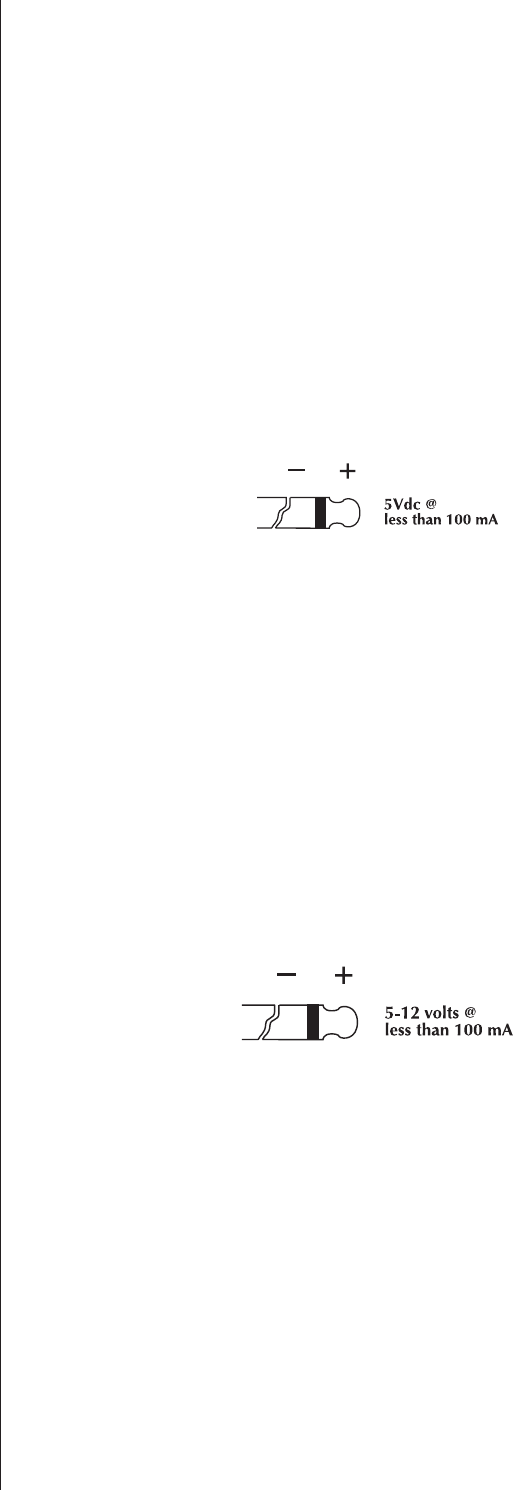
13
Actually, this IR Input and Output description is a bit of a misnomer: the
input supplied to these plugs is electrical in nature, not IR. It is obtained by
using standard IR receivers, distribution ampliers, and emitters (available
fromyourdealer)totranslatetheremote’sashesofinfraredlightinto
corresponding pulses of electricity. e big advantages here include being
able to easily route the signals anywhere they might need to go, and the
reliability of a solid electrical connection.
Since an IR distribution system such as your dealer may design for you
usually must control many products, your amplier includes both an IR
input (for the control of this product) and an IR output (so as to pass
along the same signal to the next product). is allows you to “daisy chain”
your control wires from one product to the next.
e amplier is designed to respond to IR commands of 5 Volts DC, with
the tip of the mini-plugs dened to be “positive” relative to the shank of
the plug.
6 DC Trigger Input and Output
Many audio/video preampliers can supply a DC control voltage to
associated equipment in order to induce desired behavior. Your Classé
amplier can take advantage of these capabilities in order to be switched
between operate and standby automatically, perhaps in concert with the
preamp/processor itself.
Two
1
/8
th
-inch mini mono-jacks provide this remote-controlled turn-on
(that is, toggling between operate and standby) of the amplier. ese jacks
provide a simple pass-through of the control voltage from one to the other,
allowing you to “daisy-chain” a series of ampliers quite easily.
e remote trigger will be operated by the presence of 5–12 Volts DC,
with tip polarity as shown below:
7 RS-232 Control Port
is RJ-45 connector is used for external RS-232 control of your amplier
bysystemssuchasAMX
®
, Crestron
™
and Control 4
™
.
For more information, please contact your dealer and ask about home
automation systems.


















